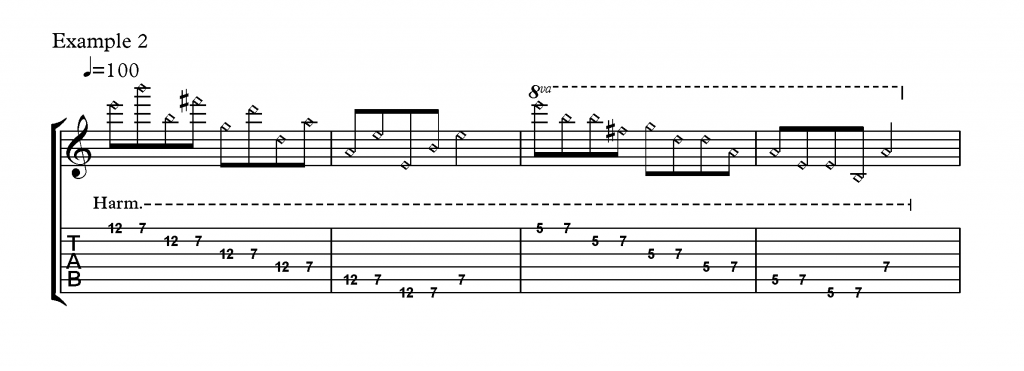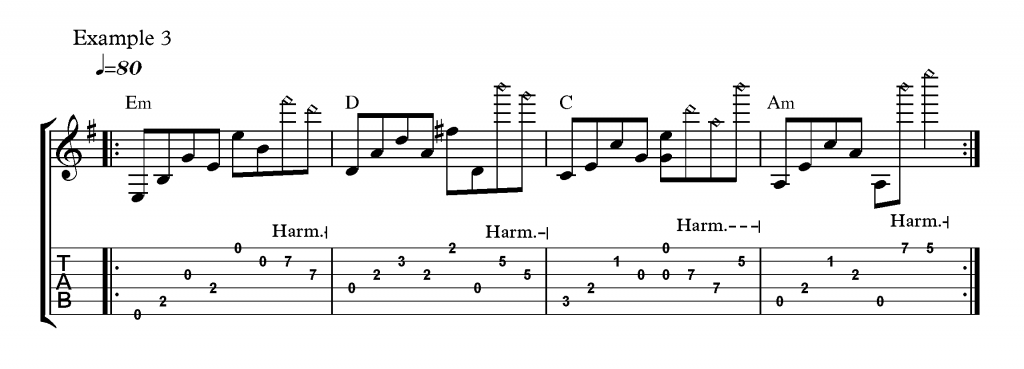Introducing Harmonics on Guitar
Over the upcoming columns I would like to explore the use of harmonics on guitar. If you’re just discovering harmonics, they can be quite confusing because the pitches don’t correspond to the fret positions. We will map the common harmonics on the neck and look at approachable ways in which we can apply them in real situations.
In this first instalment we will concentrate on natural harmonics on guitar. There are several other ways to play harmonics but these are the foundation on which the others are built.
Firstly, a little string physics… A string (or anything else, like air or wood) vibrates to produce the sound we hear and the rate at which it vibrates dictates the perceived pitch of the note. However, objects vibrate in a very complex combination of higher frequencies simultaneously (known as harmonics or overtones), the relative amplitudes (loudness) of which define the timbre of each instrument, allowing us to distinguish between a middle C played on a flute and a cello (or between different strings on the guitar.)
A harmonic is the name given to these higher frequency waves that combine with the fundamental note. When instrumentalists refer to harmonics as a method of note production it means isolating these harmonics without the fundamental note. Note the pure, less complex, timbre of harmonics on guitar compared with a normal fretted note. This is due to the lack of overtones normally present.
To perform natural harmonics on guitar lay your fretting hand finger gently across the string, touching with the pad of the finger rather than the tip. Do not squeeze the string down onto the fret as usual, and aim to make contact directly over the fretwire rather than behind it. The resultant sound should be bell-like, chiming, and pure.
Harmonics On Guitar Example 1
Firstly I’ll illustrate the most easily accessible harmonics on guitar. Those at the 12th, 7th and 5th frets.
Barre across all the strings at each fret, being careful to be over the fret wire to find the harmonic point. Unlike normal notes the fret hand can be removed after plucking the string. This is because the fretting hand is not changing the length of the string, but just helping the open string vibrate in a different way.

Harmonics On Guitar Example 2
This pattern alternates between the different harmonics found in the previous example. Use fingers one and three and flatten the fingers to help with accuracy, ensuring each harmonic rings properly rather than being a muted note.

Harmonics On Guitar Example 3
Finally, we use harmonics in the context of a clean rhythm guitar part based around open guitar chords. Part of being a good guitarist is understanding the variety of timbres that the instrument is capable of, and harmonics are a great way to make functional accompaniment parts more interesting. Metallica have used this technique in songs like Welcome Home (Sanitarium) and Nothing Else Matters.

Next time we will look at more advanced use of natural harmonics, map the actual pitches of the harmonics along the string, and start to explore other ways of performing harmonics on guitar.
Recommended listening: Acoustic and electric guitarists alike employ natural harmonics. Michael Hedges (Aerial Boundaries), Matthias Eklundh (Freak Guitar), and Steve Morse (High Tension Wires)
“The artists you work with, and the quality of your work speaks for itself.”
Tommy Emmanuel
© Copyright Fundamental Changes Ltd 2025
No.6 The Pound, Ampney Crucis, England, GL7 5SA
